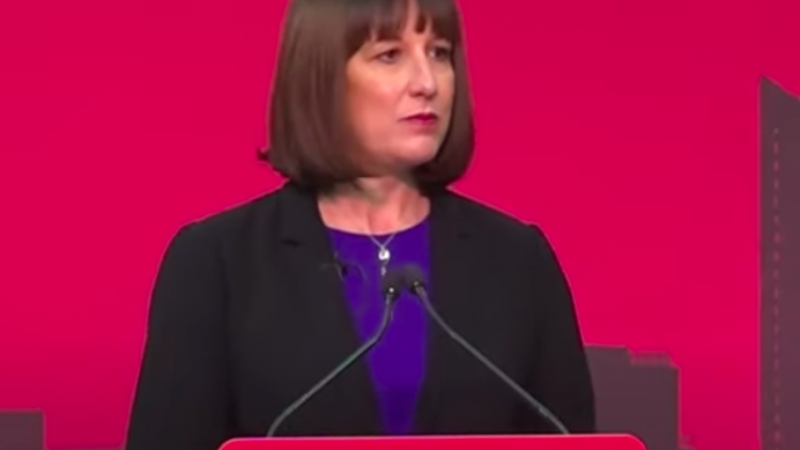This is what public sector workers need from the Labour government
"A strong economy is not possible without a strong public sector"

TweetShareWhatsAppMail
The election of a new government this year is a chance for a new start, after 14 years of austerity that delivered public service cuts, below-inflation pay deals for our members, and rising poverty.
In Labour there is the opportunity to turn the page on years of division against migrants, benefit claimants, LGBT+ people and trade unions – bolstered by anti-union laws – which have left our country poorer and more divided.
Our members working in areas like the DWP and Home Office want to end the stunts and demonisation of those claiming benefits or seeking asylum. We need efficient systems that treat people fairly, not government departments repurposed as the attack dogs of ministerial prejudice.
We’ve seen some encouraging signs from the Labour government already: the above-inflation pay offers this year are a start, but only a start, in addressing years of our members’ pay being driven down. Likewise, the immediate scrapping of the Rwanda scheme shut the door on a policy that was equal parts malice and gimmick.
We keenly await the New Deal for Working People being implemented without dilution. The Government says this package will make work pay. We will hold them to that, and ensure they tackle the poverty pay among their own staff – many of whom are reliant on Universal Credit to make ends meet, and 1 in 10 of whom have needed to rely on food banks.
In the Department for the Environment, Food & Rural Affairs (Defra), our members are campaigning for a 4-day week – and have established a dialogue with the department on this issue.
The last Conservative government had an almost kneejerk reaction against the 4-day week; even going so far as to threaten local councils that piloted the policy – so much for devolution!
But successful pilot schemes on a reduced working week have been held involving our members working for the Scottish Government, and it’s being raised in other UK government areas too.
Evidence suggests a four-day week would lead to a better work-life balance for staff and could improve productivity for the employer.
Previous trials have led to a reduction in sick leave and improvements to staff retention and satisfaction.
If Defra wants to seriously address the issues of employee burnout, stress and poor wellbeing they will listen to our members who have made a strong case to implement a pilot scheme.
To encourage ministers, we are organising a fringe meeting with the 4-day week campaign at Labour Party conference.
As part of the New Deal for Working People, it has been reported that Labour might be considering a ‘compressed hours’ scheme where employees would be allowed to work their regular hours over four days instead of five.
This is not the same as the 4-day week campaign, which involves a shortening of the working week – to increase morale, work-life balance and productivity. Nevertheless, it’s welcome at least that Labour appears to be open to these questions.
It’s vital that Labour represents a real break with the last Conservative government – the ‘Change’ that Labour promised as its election slogan.
First and foremost that means ending austerity. Next month’s Budget is pivotal for the party. Talk of “tough choice” and “painful decisions” is painfully reminiscent of George Osborne’s rhetoric. And the choice to cut winter fuel allowance from pensioners has proved deeply unpopular
Our public services are, as Keir Starmer and others said throughout the election campaign, on their knees. They cannot take more austerity. Services will collapse – hitting the public and the dedicated staff doing their best in trying circumstances.
Labour has to be bold and reject calls for restraint. You cannot solve the problems caused by austerity – underinvestment, low growth, low productivity – with further austerity.
The TUC unanimously voted for a campaign of pay restoration – not just because our members would like more money, but because it is needed.
Pay in much of the public sector is lower today than it was in 2010 – and that is also harming recruitment and retention, and resulting in backlogs and delays.
I welcome Labour’s manifesto commitment to “sectoral collective bargaining”. We need that to be restored in the civil service – where we have the absurdity and waste of 200 sets of delegated pay negotiations, when there should be just one.
Earlier this year PCS commissioned academic research on the economic effects of increasing civil service pay, and the results show that boosting civil service wages more than pays for itself through the benefits it would generate in the wider economy.
It was disappointing to hear Keir Starmer say at the TUC Congress, “with tough decisions on the horizon, pay will inevitably be shaped by that”.
Our members cannot keep paying the price for political failure. Without boosting the incomes of working people, there will not be a stronger economy – let alone the highest sustained growth in the G7 that is Labour’s mission.
A strong economy is not possible without a strong public sector – and we’re here at Labour Party conference to remind Keir Starmer of that.
Fran Heathcote is general secretary of the Public and Commercial Services (PCS) union
PCS’ fringe at Labour Party conference on the case for a 4-day week is taking place on Monday 23 September at 5pm in Arena Room 5, ACC.
This article is sponsored by PCS.














